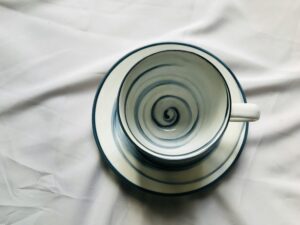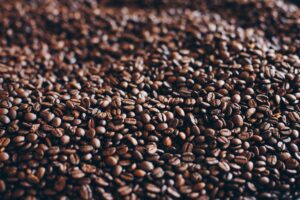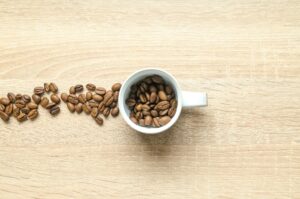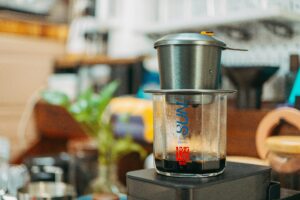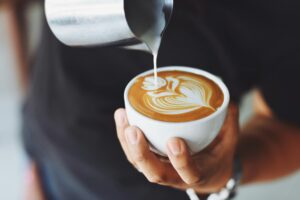The secret to brewing exceptional coffee isn’t just the beans or equipment—it’s also the grind size. Whether you’re using a French press, espresso machine, or pour-over, using the right grind size is essential to unlocking the best flavor in your cup.
Table of Contents
This comprehensive guide will walk you through everything you need to know about coffee grind sizes, including how grind size affects extraction, which grind to use for different brew methods, and how to adjust your grind for better taste.
Why Grind Size Matters
Grind size directly impacts extraction, the process of pulling flavors from coffee grounds using water. A grind that’s too fine or too coarse can lead to bitter, sour, or weak coffee.
How It Works
- Fine grind = more surface area → faster extraction
- Coarse grind = less surface area → slower extraction
If your coffee tastes:
- Bitter or over-extracted → your grind may be too fine
- Sour or under-extracted → your grind may be too coarse
Getting the right grind size means striking a balance between time, water temperature, and surface area.
Coffee Grind Size Chart (From Coarse to Fine)
| Grind Size | Texture | Best For |
| Extra Coarse | Chunky, like peppercorns | Cold Brew |
| Coarse | Sea salt-like | French Press, Cowboy Coffee |
| Medium-Coarse | Rough sand | Chemex, Clever Dripper |
| Medium | Regular sand | Drip Machines, Aeropress |
| Medium-Fine | Table salt | Pour-Over, Siphon |
| Fine | Powdery, like sugar | Espresso |
| Extra Fine | Almost like flour | Turkish Coffee |
Grind Sizes for Every Brewing Method
Each brewing method extracts coffee differently and requires a specific grind size for optimal results.
Cold Brew
- Grind: Extra Coarse
- Why: Cold brew steeps for 12–24 hours, so you need large chunks to prevent over-extraction and bitterness.
French Press
- Grind: Coarse
- Why: A coarser grind allows for a longer steep time and easy filtration using the mesh plunger.
Chemex
- Grind: Medium-Coarse
- Why: Chemex uses a thick paper filter and longer brew time. A too-fine grind can clog the filter and cause over-extraction.
Drip Coffee Makers
- Grind: Medium
- Why: Most drip machines are calibrated for medium grounds. Too coarse will taste weak; too fine may overflow the filter.
Aeropress
- Grind: Medium (but can vary)
- Why: This method is highly versatile. For longer brew times, use medium-coarse; for short brew times, go finer.
Pour-Over (Hario V60, Kalita Wave)
- Grind: Medium-Fine
- Why: Pour-over methods need a finer grind to slow the water flow and properly extract flavor.
Espresso
- Grind: Fine
- Why: Espresso machines use high pressure over a short time (25–30 seconds), so a fine grind is essential to create resistance and build crema.
Turkish Coffee
- Grind: Extra Fine
- Why: Turkish coffee is boiled and unfiltered, so the grind must be powdery enough to dissolve into the water.
How to Tell if Your Grind Is Right
Tasting your coffee is the best way to test if your grind size is correct. Here are a few key signs:
Signs of Too Fine a Grind
- Bitter or burnt flavor
- Clogged filters (in pour-over or drip)
- Sluggish espresso shot time (over 30 seconds)
Signs of Too Coarse a Grind
- Sour or grassy taste
- Watery body
- Fast brew times or under-extracted espresso (less than 20 seconds)
Adjust in small increments and always keep track of changes for consistency.
Manual vs. Electric Grinders
Grinders play a huge role in grind consistency, which in turn affects flavor.
Blade Grinder
- Inconsistent grind
- Affordable, but less control
- Best for drip or French press (if budget-constrained)
Burr Grinder (Manual or Electric)
- Consistent grind size
- More control over particle size
- Essential for espresso and pour-over brewing
Top Burr Grinder Picks in 2025:
- Baratza Encore ESP (great for espresso and pour-over)
- Fellow Opus (stylish, versatile)
- 1Zpresso JX-Pro (manual grinder with precision)
How to Adjust Grind Size Based on Taste
When dialing in your coffee, use these tips to guide your adjustments:
- Coffee tastes bitter or dry? → Make the grind coarser
- Coffee tastes sour or weak? → Make the grind finer
- Brewing too fast? → Finer grind slows flow
- Brewing too slow? → Coarser grind speeds it up
Small changes make a big difference—adjust one notch at a time.
Espresso-Specific Grinding Tips
Espresso requires extra precision. Use a burr grinder that allows for micro-adjustments.
Dialing In Espresso
- Start with a fine grind, about the texture of table salt
- Brew a test shot (25–30 seconds from button press to final drop)
- If it’s fast (under 20s), go finer
- If it’s slow or bitter, go coarser
Don’t forget to weigh your dose and yield. Consistency is everything.
Does Roast Level Affect Grind Size?
Yes. Different roast levels extract at different rates and can affect how fine or coarse your grind should be.
- Dark Roasts: More soluble, require coarser grinds
- Light Roasts: Denser, need finer grinds to extract flavors fully
Always adjust slightly based on bean density and age.
Storing Your Ground Coffee
Freshness matters. Ground coffee loses aroma quickly due to oxidation.
Best Practices:
- Grind right before brewing
- Use an airtight container with minimal light and moisture
- Avoid freezing pre-ground coffee (it damages cell structure)
Pro tip: Store whole beans and grind only what you need per brew.
Final Thoughts
Understanding grind size is essential to brewing better coffee at home. Whether you’re a casual coffee drinker or a budding home barista, mastering grind consistency will elevate every cup you brew.
Summary of Key Points
- Match your grind to the brew method
- Use a burr grinder for precision
- Adjust based on taste and brew time
- Freshly ground beans always outperform pre-ground
- Don’t underestimate the impact of grind on flavor, aroma, and body

